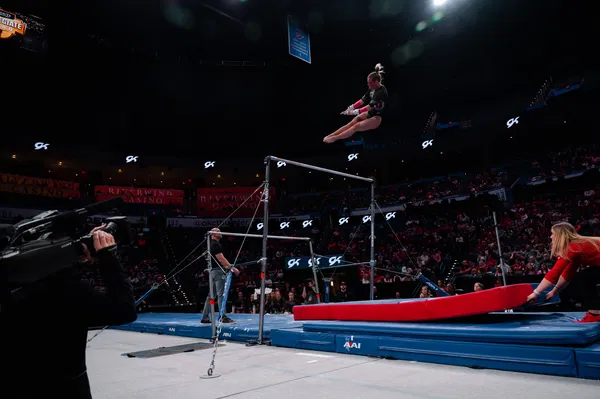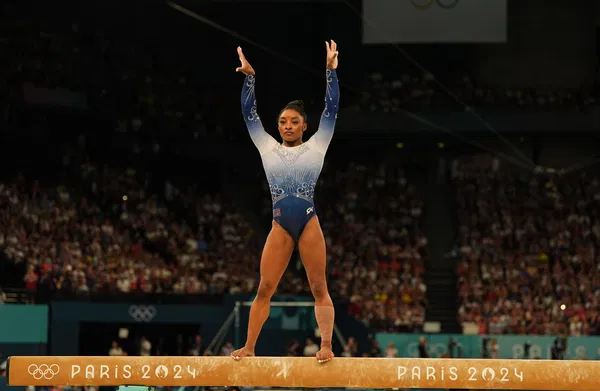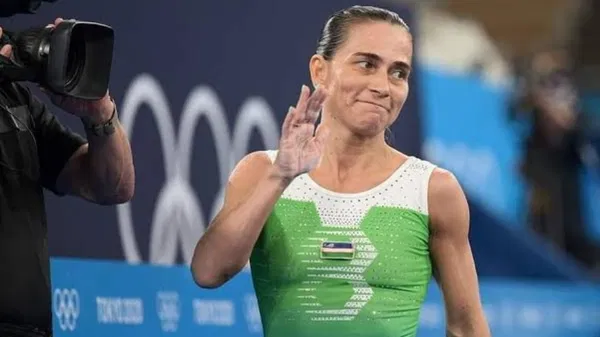
Chellsie Memmel Redefines Age in Gymnastics: A New Perspective on Athletic Longevity
The idea that “age is just a number” is often debated in sports, but numerous athletes have defied conventional expectations. Tom Brady secured a Super Bowl victory at 43, and Dara Torres competed in the Olympics at 41. These remarkable feats challenge the notion that athletic performance declines inevitably with age. Now, a former Olympian is taking this challenge further, aiming to reshape perceptions about sports and aging through her work in gymnastics.
Reviving Passion for Gymnastics at Any Age

Chellsie Memmel, a 36-year-old former Olympic gymnast, has taken it upon herself to redefine what it means to be an athlete beyond one’s prime years. After initially retiring in 2012, she surprised many by making a return to competitive gymnastics in 2019. She competed at the US Classic, proving that with the right approach, athletes can continue to push their limits.
Memmel believes that people of all ages can stay involved in gymnastics as long as they understand the mechanics of training and recovery. In an interview on February 16, she explained that while older bodies may require longer warm-ups, they are still capable of performing challenging movements. She emphasizes a strategic approach, saying, “Smart about how you train, how you take care of your body, how you’re recovering.”
Her comeback journey led her to a deeper realization: gymnastics isn’t only for young athletes. This inspired her to create an adult gymnastics program in New Berlin, where she encourages others to rekindle their passion for the sport. The program has quickly gained traction, attracting people who had either given up gymnastics or never thought they could start.
A Scientific Approach to Aging in Sports
Memmel’s philosophy is grounded in the idea that consistency and smart training can allow older athletes to continue performing at high levels. Reflecting on her own experience, she shared how gradually increasing her training intensity reignited her gymnastics skills. She recalled, “I was working out a lot and then I was just kind of like, I feel good. Why don’t I just start flipping a little bit more? And then it just kind of snowballed.”
Her adult gymnastics facility isn’t just about breaking stereotypes—it’s also about providing a fun, engaging workout experience. Memmel highlights that one of her main motivations is to offer people a different way to exercise, one that is enjoyable and creatively fulfilling.
Her efforts have already inspired several individuals. For instance, 40-year-old Debbie Daemmrich admitted that returning to gymnastics came with its fair share of challenges, saying, “It’s definitely harder. There’s a lot more aches and pains, but it has been absolutely great.” Similarly, former gymnast Allison Joers expressed amazement at how her body adapted to the training, stating, “I feel stronger now than when I was in it when I was 15.”
History Proves Age Isn’t a Limitation

Memmel’s work aligns with a long-standing history of athletes who have shattered age-related barriers. The oldest Olympian ever recorded was Oscar Swahn, who won a gold medal at 72 years and 279 days old during the 1920 Antwerp Games.
In gymnastics, Uzbekistan’s Oksana Chusovitina has been a trailblazer. She competed in the Tokyo Olympics at the age of 46, making her the oldest female gymnast in Olympic history. At 49, she remains active and plans to compete in the Cottbus World Cup in 2025. On the men’s side, Masao Takemoto of Japan participated in the 1960 Olympics at 41, and Romanian gymnast Marian Dragulescu competed in the vault event at 40 during the Tokyo Olympics.
Even at the 2024 Paris Olympics, age-defying athletes made an impact. Though Chusovitina did not qualify for what would have been her ninth Olympics, 35-year-old Armenian gymnast Davtyan Vahagn emerged as the oldest male gymnast of the event.
A Shift in Mindset
The presence of these athletes demonstrates that age in sports can be viewed as a challenge rather than a limitation. Their successes support Memmel’s belief that, with dedication and the right approach, athletes can continue to push their boundaries well into their later years. Through her efforts, she is proving that gymnastics—and sports in general—can remain accessible and enjoyable regardless of age.